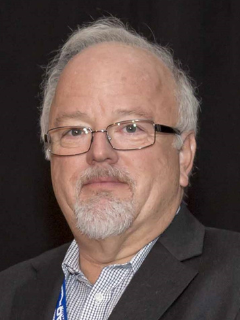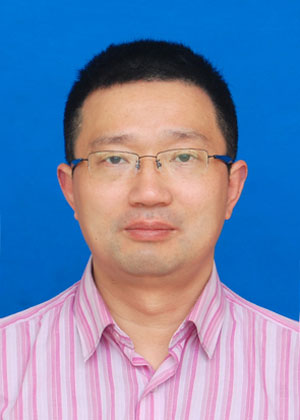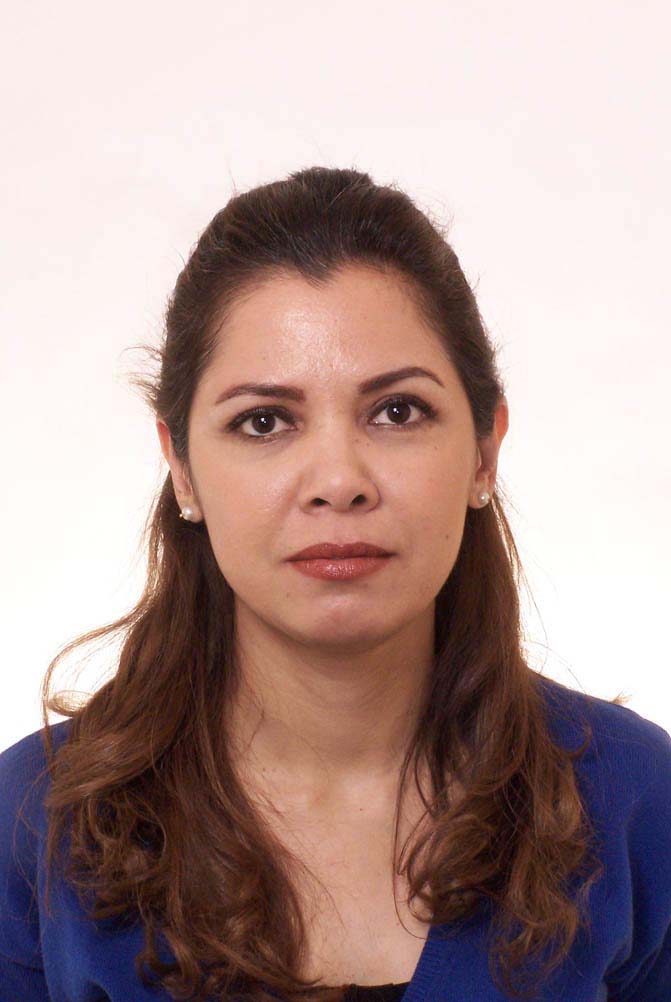
Date: Mon Aug 1, 2016
Time: 4:20 PM - 6:00 PM
Moderator: Kristin Piikki
Quantification and assessment of soil health involves determining how well a soil is performing its biological, chemical, and physical functions relative to its inherent potential. Due to high cost, labor requirements, and soil disturbance, traditional laboratory analyses cannot provide high resolution soil health data. Therefore, sensor-based approaches are important to facilitate cost-effective, site-specific management for soil health. In the Central Claypan Region, visible, near-infrared (VNIR) diffuse reflectance spectroscopy has successfully been used to estimate biological components of soil health as well as Soil Management Assessment Framework (SMAF) scores. In contrast, estimation models for important chemical and physical aspects of soil health have been less successful with VNIR spectroscopy. In this study, a sensor fusion approach was investigated that incorporated VNIR spectroscopy, soil apparent electrical conductivity (ECa), and penetration resistance measured by cone penetrometer (i.e., cone index, CI). Soil samples were collected from two depths (0-5 and 5-15 cm) at 108 locations within a 10-ha research site encompassing different cropping systems and landscape positions. Soil health measurements and VNIR spectral data were obtained in the laboratory, while CI and ECa data were obtained in situ. Calibration models were developed with partial least squares (PLS) regression and model performance was evaluated using coefficient of determination (R2), root mean squared error (RMSE), and residual prediction deviation (RPD). Models integrating ECa and CI with VNIR reflectance data improved estimates of the overall SMAF score (R2 = 0.78, RPD = 2.13) relative to VNIR alone (R2 = 0.69, RPD = 1.82), reducing RMSE by 14%. Improved models were also achieved for estimates of the individual biological, chemical, and physical soil health scores. The results of this study illustrate the potential for rapid, in-field quantification of soil health by fusing VNIR sensors with auxiliary data obtained from complementary sensors.



Visible and near infrared reflectance spectroscopy (VNIR) is becoming an extensively researched technology to predict soil properties such as soil organic carbon, inorganic carbon, total nitrogen, moisture for precision agriculture. Due to its rapid, non-destructive nature and ability to infer multiple soil properties simultaneously, engineers have been trying to develop proximal sensors based on the VNIR technology to enable horizontal soil sensing and mapping. Since the vertical variation of soil properties are equally important as the lateral variation for precision agriculture decisions, VNIR can be utilized to develop sensors for vertical soil sensing as well. The objective of this study was to evaluate the performance of two VNIR probe designs using an independent soil VNIR library for model calibration. We developed and tested two designs (referred to as D1 and D2) One hundred and fifty Nebraska soil samples were randomly selected from the USDA-NRCS-KSSL soil archive and scanned by the two VNIR probes. Same soil samples were also scanned by ASD’s mug lamp accessory as the standard laboratory scans. The spectra obtained from the VNIR probes were compared with standard mug lamp scans. A soil library of 1595 sample scans was used to calibrate models using partial least squares regression (PLS) for total carbon (TC), organic carbon (OC) and total nitrogen (TN). The models were used to predict for the scans obtained from D1 and D2 and the mug lamp to evaluate the performance of the designs. Results showed that, in general, both D1 and D2 followed the mug lamp scans with D1 having higher noise levels at the beginning and end of the spectrum as compared to D2. The comparison of predictions suggested that D2 performs comparably to the standard mug lamp; whereas D1 fails to achieve such accuracy due to its inherent noises in scans. Overall performance of D2 suggested its ability to be integrated into a hydraulic penetrometer for high resolution vertical soil sensing.
Soil organic matter (SOM) is an essential soil property for assessing the fertility of paddy soils in South China. In this study, a set of micro-tractor-based on-the-go device was developed and integrated to measure in-situ soil visible and near infrared (VIS–NIR) spectroscopy and estimate SOM content. This micro-tractor-based on-the-go device is composed of a micro-tractor with toothed-caterpillar band, a USB2000+ VIS–NIR spectroscopy detector, a self-customized steel plow and a self-customized compact spectroscopy probe with a sapphire windows. Two study area are selected, one is located in Hunan, the other in Jiangxi provinces, P. R. China. In each study area, vis-NIR spectra of 50 sites were collected by on-the-go spectroscopy detector and the corresponding topsoil were collected using a cubic soil sampler (10 cm×10 cm×20 cm). Then soil samples were air dried, ground and sieved to a size fraction of less than 2 mm. SOM was measured using the H2SO4-K2Cr2O7 oxidation method at 180℃ for 5 minutes and VIS–NIR spectra were measured again in the laboratory condition using an USB2000+ linked to a laptop by an USB cable. Based on laboratory spectra, direct standardization (DS) method was applied to remove environmental factors from field spectra. The resulting data were divided into calibration (34 samples) and validation (16 samples) sets in two fields, respectively. A partial least square regression (PLSR) was used to predict SOM using on-the-go spectra, laboratory spectra and DS-transferred spectra. SOM spatial distribution maps developed using the on-the-go measured VIS-NIR spectra and the laboratory measured validation dataset were compared. Being interfered by environmental factors, especially water in the soil, the prediction accuracy of SOM using on-the-go spectra spectra (RPD between 0.9995 and 1.3561) were less than these using laboratory spectra (RPD between 1.7747 and 1.8981). Predictions of SOM with the DS-transferred spectra (RPD between 1.6261 and 1.6671) were more accurate than these with on-the-go spectra. Both of two maps showed partial similarity at most areas over two fields. Research results indicated a great potential to estimate SOM in the field using our on-the-go vis-NIR spectroscopy platform combing DS method.

The development of accurate visible and near infrared (vis-NIR) spectroscopy calibration models for selected soil properties is a crucial step for variable rate application in precision agriculture. The objective of the present study was to compare the prediction performance of vis-NIR spectroscopy at local, regional, national and continental scales using data mining techniques including spiking. Fresh soil samples collected from farms in the UK, Czech Republic, Germany, Denmark and the Netherlands were scanned with a fibre-type vis-NIR spectrophotometer (tec5 Technology for Spectroscopy, Germany), with a spectral range of 305-2200 nm. After dividing spectra into calibration (75%) and validation (25%) sets, spectra in the calibration set were subjected to three multivariate calibration models. The partial least squares regression (PLSR), multivariate adaptive regression splines (MARS) and support vector machines (SVM), with leave-one-out cross-validation were used to establish calibration models of total nitrogen (TN), total carbon (TC) and soil moisture content (MC). The results showed the lowest model performance to be obtained when the single field (local scale) data were used in the calibration models. The effect of spiking was significant and the best model performance was obtained when local samples collected from two fields in the UK were spiked with European soil samples (continental), followed by when the same samples were spiked with UK samples (national). Therefore, these results suggest that continental and national vis-NIR calibration models can be successfully used to predict TN, TC and MC. Therefore, selection of the optimal soil samples with the appropriate data mining technique should be considered when developing vis-NIR calibration models for a non-standard soil to cover a wide variation range.
Successful estimation of spectrally active soil texture with Visible and Near-Infrared (VNIR, 400-1200 nm) and Short-Wave-Infrared (SWIR, 1200-2500 nm) spectroscopy depends mostly on the selection of an appropriate data mining algorithm. The aims of this paper were: to compare different data mining algorithms including Partial Least Squares Regression (PLSR), which is the most common technique in soil spectroscopy, Support Vector Machine Regression (SVMR), Boosted Regression Trees (BRT), and Memory Based Learning (MBL) as a very new promising approach for estimating the contents of clay, silt, and sand, to explore whether these methods show differences regarding their ability to predict soil texture from VNIR/SWIR data and to evaluate the interpretability of the results. The dataset consists of 1104 samples from large brown coal mining dumpsites in the Czech Republic. Spectral readings were taken in the laboratory with a fibreoptic ASD FieldSpec III Pro FR spectroradiometer. Leave-one-out cross validation was applied to optimize and validate the models. Comparisons were made in terms of the coefficient of determination (R2cv) and the Root Mean Square Error of Prediction of Cross Validation (RMSEPcv). Predictions of the three soil properties by MBL outperformed the accuracy of the other algorithms. It produced the largest R2cv and smallest RMSEPcv values, especially for clay, followed by SVMR. Actually, the main goal of this work was to develop a suitable MBL approach for soil spectroscopy, it showed that MBL is a very promising approach to deal with complex soil texture VNIR/SWIR datasets. A systematic comparison like the one presented here is important as the nature of the target function has a strong influence on the performance of the different algorithms.

